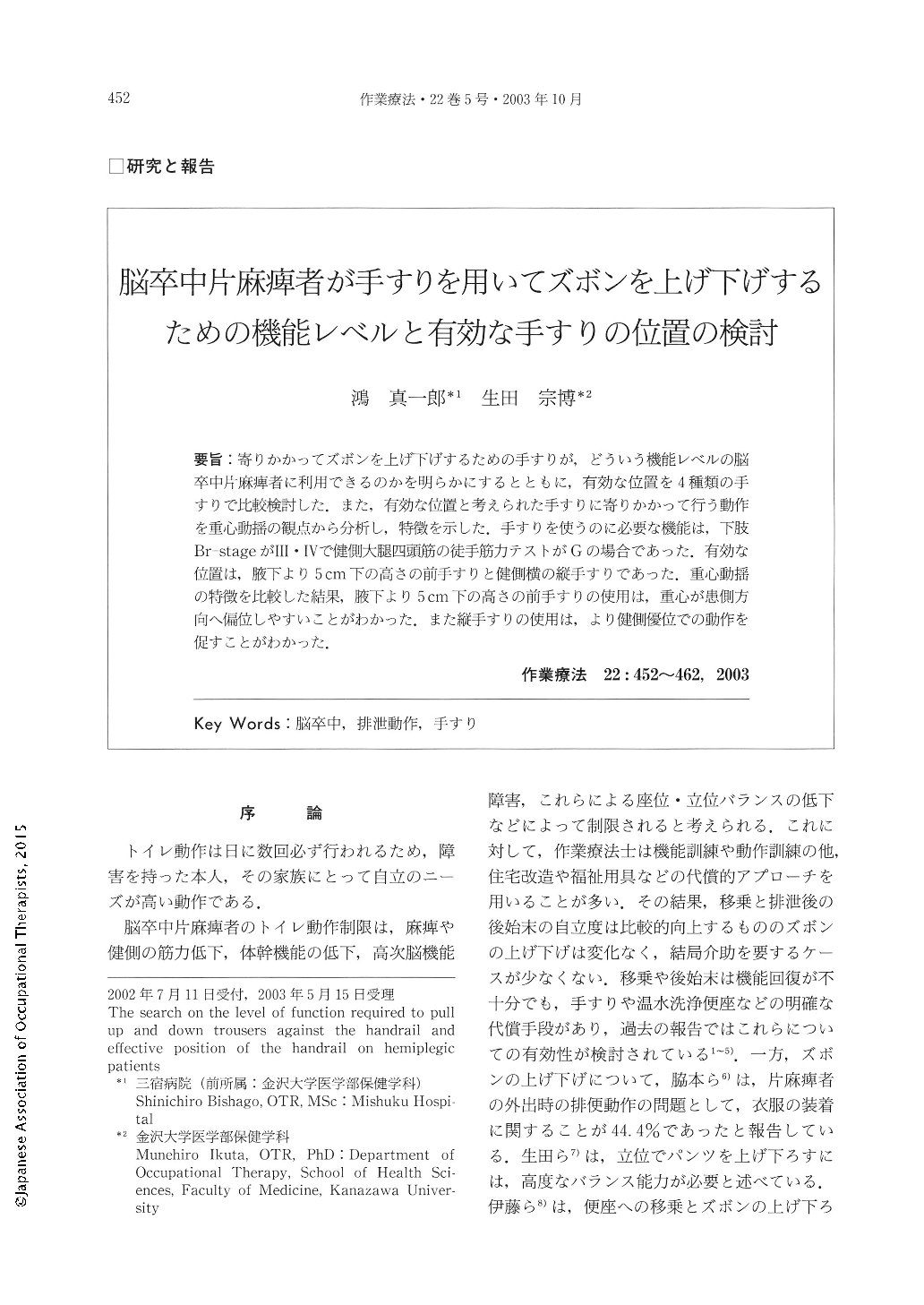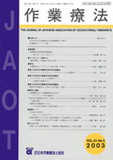Japanese
English
- 販売していません
- Abstract 文献概要
- 1ページ目 Look Inside
- 参考文献 Reference
- サイト内被引用 Cited by
要旨:寄りかかってズボンを上げ下げするための手すりが,どういう機能レベルの脳卒中片麻痺者に利用できるのかを明らかにするとともに,有効な位置を4種類の手すりで比較検討した.また,有効な位置と考えられた手すりに寄りかかって行う動作を重心動揺の観点から分析し,特徴を示した.手すりを使うのに必要な機能は,下肢Br-stageがⅢ・Ⅳで健側大腿四頭筋の徒手筋力テストがGの場合であった.有効な位置は,腋下より5cm下の高さの前手すりと健側横の縦手すりであった.重心動揺の特徴を比較した結果,腋下より5cm下の高さの前手すりの使用は,重心が患側方向へ偏位しやすいことがわかった.また縦手すりの使用は,より健側優位での動作を促すことがわかった.
The purpose of this study is to clarify the level of function required for a hemiplegic patient to pull up and down his trousers while leanig against the handrail and the effective position of the handrail. In addition, from the viewpoint of the sway of the center of gravity, we analyzed the patient's movements employing effective handrail positions while pulling up and down trousers.
The level of function required for the patient to pull up and down trousers against the handrail, in the case of Br-stage of the lower extremity, reached the 3rd and 4th levels, while the MMT of quadriceps of the unaffected side reached the G level.
The effective position of the handrail reached a before-handrail height of -5cm from an axilla and a vertical handrail on the unaffected side.
With regard to sway of the center of gravity, it was easy to sway the affected side when the subjects used a before-handrail of -5cm from an axilla, and it was also easy to sway the unaffected side when the subjects used a vertical handrail on the unaffected side.

Copyright © 2003, Japanese Association of Occupational Therapists. All rights reserved.


